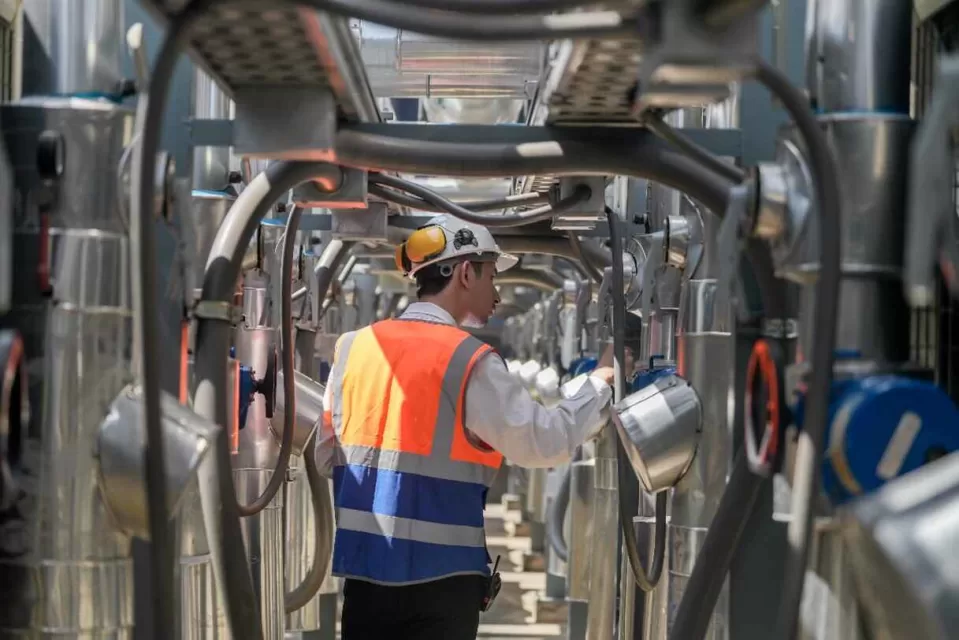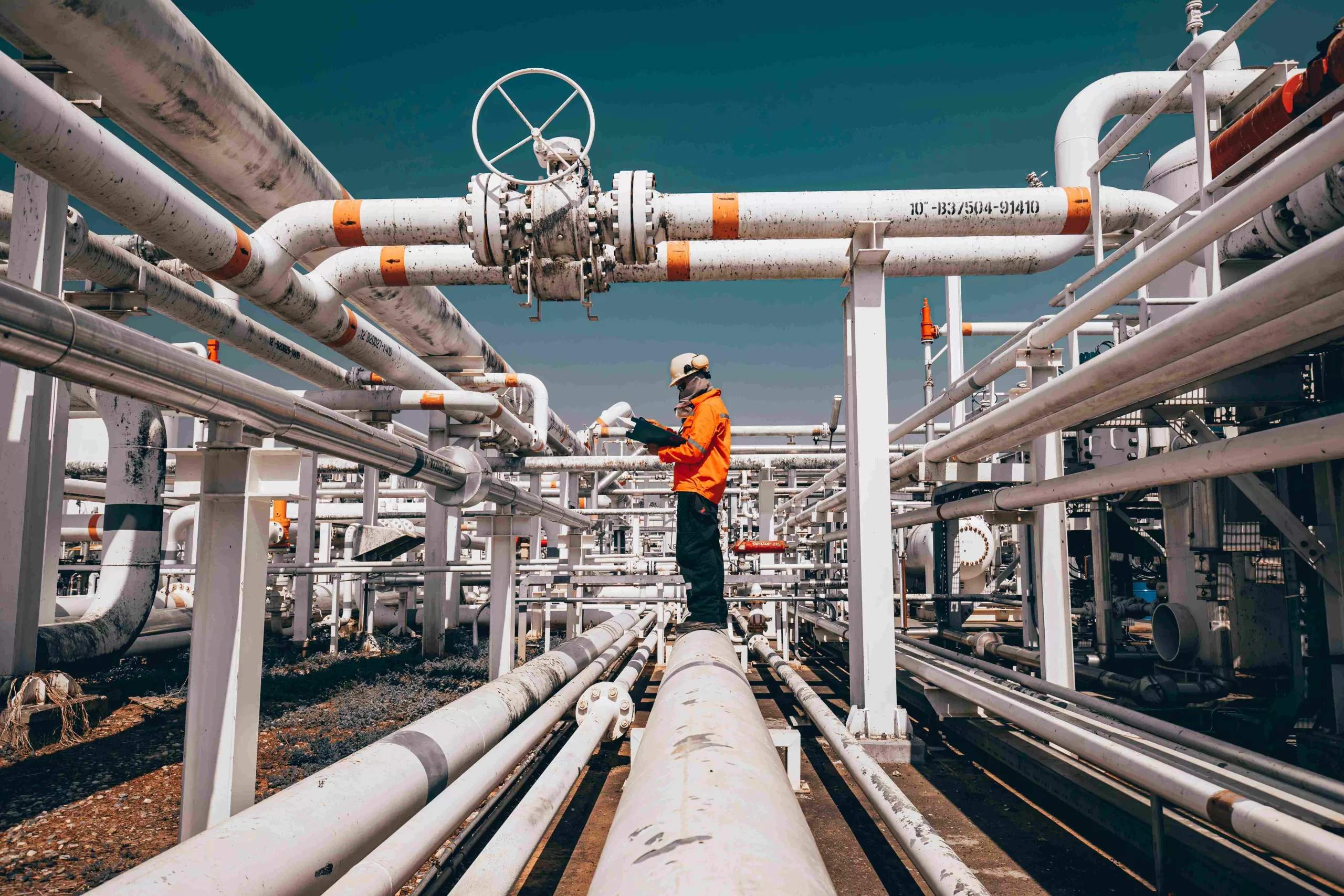A large-scale, complex system of pipelines is needed to supply energy to a country’s entire population. The US alone has a network of pipelines stretching to 2.8 million miles. These are crucial in transporting energy, in the form of oil and natural gas, for commercial and residential usage.
Furthermore, once natural gas reaches its destination, it must be distributed throughout the property. This is the job of the gas compression piping system.
The dense network of piping systems present in a country is a testament to its economic activity and population size. Data indicates that the size of oil and gas pipelines in operation and underdevelopment are directly related to the size of a country’s economy. Energy, after all, fuels the engine of a country’s development.
Like every capital resource, gas pipes undergo depreciation. The inevitable process of wear and tear eventually requires repairs or shuts down and is replaced. Studying the system lifecycle of piping systems is important to understand how they work better.
We take energy getting delivered to our doorstep for granted; we need to appreciate pipelines designs for helping us do all kinds of work. The transportation of energy from the source to us is a complicated process fraught with hazards. Companies like ReCo Energy Solutions are working tirelessly to improve the safety of pipelines. These efforts need recognition and encouragement.
Types of Pipes Used in Piping Systems
It is important to examine the types of pipes used in piping systems. Here are the main types of materials used in making gas pipes:
Black Iron Pipes
Black iron is the most common material for gas piping systems. It is durable and can withstand heat and pressure well, making it a great option for decommissioning piping systems indoors or outdoors. Unfortunately, black iron corrodes over time and needs proper maintenance to last a long time. Timely repairs can prevent issues like gas leaks.
Galvanized Steel Pipes
Another popular option is galvanized steel pipes. These are pipes coated with a layer of zinc which prevents the pipes from corroding or rusting. The process of galvanization adds strength and longevity to the pipes. It is a suitable material for internal and external piping systems.
A major drawback of this material is its cost. Installation is expensive due to the galvanization process and because fitting the gas piping system safety requires many workers.
PVC Pipes
Polyvinyl Chloride (PVC) may not seem like a good option for a gas piping system, but it works well specifically for outdoor gas piping systems. PVC is a cost-effective option, especially for large-scale gas piping systems. The material does not corrode or rust and is flexible enough to allow for changes in temperature and pressure.
Caution, however, must be exercised since PVC pipes can break much more easily than steel or iron pipes. Aside from this PVC is a superior material for piping compared to most other options.
Copper Pipes
Copper is usually associated with electricity, though copper gas piping systems do exist. Copper works well, it is strong and does not corrode unlike most other metals used in construction. Still, copper pipes are not as sturdy as steel or iron and have a useful life of 20 years.
Corrugated Stainless Steel Pipes
Corrugated stainless steel pipes are strong, flexible, and resistant to corrosion. They are perfect for interior and exterior piping systems because they combine the strengths of most of the other materials already discussed.
The only issue with using corrugated stainless-steel pipes is that they conduct electricity. So, the pipes may pose a risk in the case of lightning. Fortunately, this can be countered easily by covering the pipes in a protective material, like plastic. Most corrugated stainless steel pipes come with a plastic covering on the outside.
Distribution Pipelines
Distribution pipelines are owned and operated by utility companies as these deliver refined oil and natural gas to the final users. These include businesses as well as homes. Whether you are using oil or gas for commercial or personal purposes, you are getting the supply through distribution pipelines.
All four pipeline variations are needed for the development of a pipeline network that can transport oil and gas securely where needed. The lifecycle that each type of pipeline follows is quite similar as well
Lifecycle of Piping Systems
It is necessary to study the piping system lifecycle to determine safety protocols concerning piping systems and their safety. The piping system lifecycle consists of the following stages:

The Planning Stage
The need for a piping system is determined at this stage. The planning phase highlights the need for pipes along with the length and route that the pipeline will take. The land over or under which the pipeline is expected to be laid will be surveyed and granted clearance for the installation of the pipeline.
It is at this stage that the land acquisition will begin. The land over which the pipelines are placed has to be bought. Public and/or private land needs to be bought to ensure that the pipeline is not going over property that belongs to the government or a private entity.
The necessary permits are also applied for and acquired so construction work can begin and move on smoothly. Permits are needed because owning the land for the pipeline is one thing, and bringing heavy-duty machinery and hundreds of workers to work on the site is another. Protected areas, like heritage sites, are kept out of bounds to minimize the adverse impact of large-scale construction.
Preparation Phase
All necessary measures are taken prior to installing the piping system. This includes getting approval from the relevant authority and gaining approval for the planned gas piping system design. All the necessary materials and equipment are retrieved so that the installation process can progress smoothly.
Pipeline Installation
After the land is cleared further preparation includes trench digging. Even pipelines that are above the ground need trenches so they can be laid snugly into the ground. The size of the trench is determined by the dimensions of the pipeline design that is being placed.
Support structures are put in place and inspectors give the clearance for the construction team to start work. Inspectors make sure that the area is cleared of any animals that may accidentally be roaming about. The workers align the pipeline parts and weld to secure the structure. This stage is labor-intensive and requires heavy-duty machinery so pipeline parts can be installed.
A special fabric material is used to cushion the pipeline in rocky areas to prevent damage to the structure of the pipeline.
Testing Phase
Since the pipeline will be transporting fossil fuels that are highly flammable across large distances, even a small mistake can have serious consequences. This is why before the pipeline can be made functional it undergoes rigorous testing.
Pressure testing is conducted to identify any vulnerabilities that may result in accidents later on. The pipeline is tested for its durability and ability to withstand pressure. It is checked for leaks, gaps, or construction errors. The idea is to fix the problem before the pipeline is commissioned and made operational. This is a mandatory regulatory requirement.
Consistent Maintenance and Repairs
Once the pipeline is operational, it needs to be monitored constantly. Monitoring is necessary to ensure that the pipeline is working well and detect any issues as soon as they occur so corrective measures can be taken.
A lot of precautions are already in place to minimize risks and increase the longevity of the piping system. It is a huge investment. At the same time, continued work is needed to make sure that the pipeline is in good working condition.
Natural gas pipelines are monitored round-the-clock using computerized systems. These systems check the gas pressure throughout the day and look out for any anomalies that may signal a problem. Emissions are minimal since the transportation of fuel does not produce a lot of waste. Still, pipelines need to be cleaned regularly to prevent the build-up of debris and pipeline sludge. Aside from monitoring, repairs may be required due to damage caused by environmental factors, such as weather. Such repairs are common, especially in difficult weather and terrain areas.
Detecting leaks is another critical part of monitoring the pipeline for issues. Leaks may be observed directly, which is easier with oil than gas because gas is invisible. Another way that leaks are detected is by measuring the pipeline delivery volume.
If the amount of oil or gas being delivered has decreased, this may indicate a leakage in the piping system. It could also be attributed to the build-up of waste, but problems do not arise when the pipeline is cleaned regularly.
Detecting a leak should be followed by quick rectifying measures since a leak not only wastes precious resources but poses a serious hazard.
Optimizing Safety
Pipeline safety is of immense importance. This is why operators must be aware of each aspect of the piping system safety. This includes systematic cutting and trimming of vegetation around the site where the pipeline passes.
Regulation in the US further requires pipeline companies to identify sections of the pipeline that have a higher potential for causing damage if they happen to be compromised. This helps to prioritize these sections and make safety more robust. The idea is to decrease the possibility of an accident in these pipeline segments.
Russia-Congo Fuel Pipeline Construction Project
Decommissioning a Pipeline
Pipelines design last a long time, but like with any other manmade structures they have a fixed lifetime. Depreciation over the years has caused pipelines to become inefficient. Sometimes pipelines are no longer needed in the area due to changes in technology or population.
In such cases, the pipelines must be decommissioned and abandoned carefully. A regulatory framework should be followed to minimize the impact on the environment. Pipelines that are laid on the ground are disassembled and removed. The area is cleared to allow for vegetation to grow back or development to take place.
Underground pipelines are not easy to remove which is why these are left abandoned. It is perfectly fine to leave a pipeline or pipe segment after completely removing the oil or gas from it, cleaning it thoroughly, and disconnecting it from the rest of the piping system.
Piping Systems Through the Years
Piping systems have an estimated life of 50 years, though many last a much longer time. proper care and maintenance increase the longevity of piping systems best practices along with the use of high-quality construction materials.
It is essential for pipelines that transport oil and natural gas to be sturdy and durable. On top of that, they need careful monitoring to prevent any accidents. Pipelines are integral to our society. The power our industries, businesses, and homes. At the same time, we must invest in a proper piping system and optimize its maintenance to gain maximum benefit.

